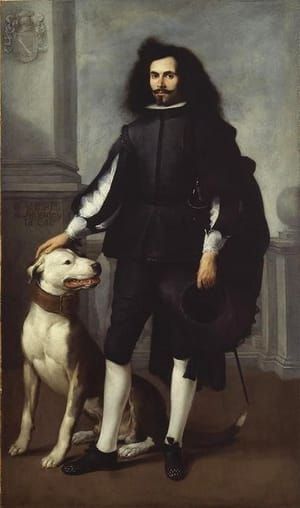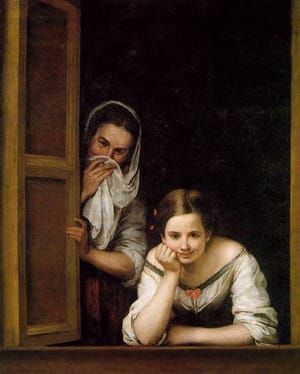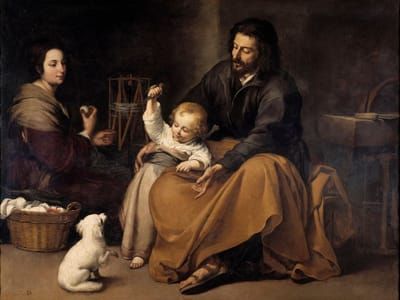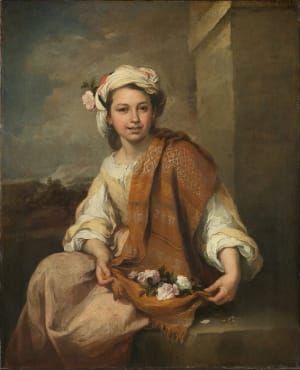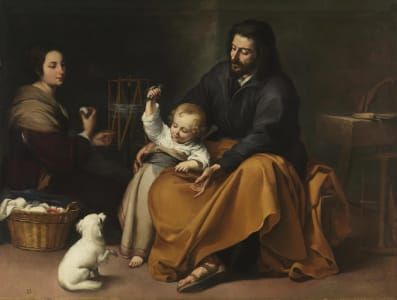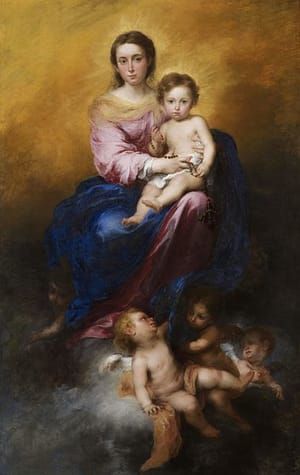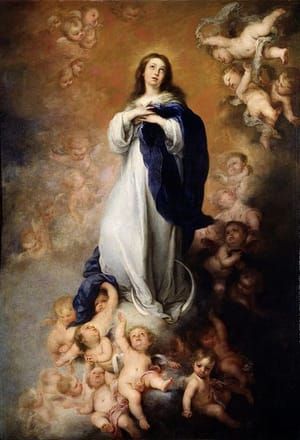
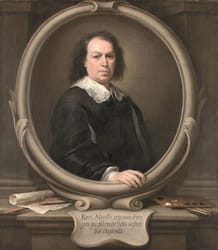
Self Portrait, 1670
Bartolomé Esteban Murillo
Within a few years of his wife’s death, in 1663, Murillo executed a second self portrait, which he dedicated to his four teenage children. The elegantly rendered Latin inscription below the portrait translates “Bartolomé Murillo painted himself to fulfill the wishes and prayers of his children.” In format, this self portrait is similar to the earlier one. Murillo appears again in three-quarters pose, gazing out toward the viewer. He looks older, his expression forlorn and weary. By this date, Murillo was in his 50s and had lost not only his wife, but also five of his nine children. The outfit he wears is similar to the one in the Frick self portrait: a black jacket over a white shirt. The golilla, however, has been updated with a more fashionable style: a wider, unstarched collar decorated with lace, known in Spain as a valona (Walloon collar).
The trompe l’oeil stone frame around Murillo’s image is more elaborate than the one in the earlier self portrait. Decorated with scrolls and idealized foliage, it is resting on a stone ledge, set into the niche of a wall. Flanking the frame are the signature attributes of an artist: to the left, a wooden ruler, a sheet of paper with a red- chalk drawing of human leg s, a compass, and a chalk holder; to the right are the painter’s brushes and palette.
While the sitter in the earlier self portrait could be mistaken for a nobleman (were it not for the posthumous inscription), the later self portrait clearly depicts an artist, who names himself in the inscription carved into a cartouche below the frame. Soon after Murillo’s death, in 1682, his second self portrait was engraved in Flanders, probably to commemorate his life and career.
[http://arthistorynewsreport.blogspot.nl/2017/11/murillo-self-portraits.html]
The Latin inscription on the cartouche at the centre of the ledge explains that the selfportrait was made at the request of Murillo's children: 'Bart (olo) mé Murillo portraying himself to fulfil the wishes and prayers of his children - or sons'.
Despite the unlined appearance of the face the painting is probably relatively late in date, of the late 1660s or early 1670s, when Murillo's children would have been of an age to take pride in their father's achievements.
The composition is based on a formula that had been developed for portrait engravings used on the frontispiece of books. The sitter is shown in an oval frame and on the ledge below are the instruments of his profession, a palette and brushes on the right and a drawing and pencil on the left. The portrait was in Brussels the year of Murillo's death, 1682. It was imported to England in the early 18th century and inspired Hogarth's famous self portrait (London, Tate Gallery).
...Separated by about a decade, Murillo’s self portraits serve as bookends to the exhibition. The earlier work, from 1650–55, depicts the self-confidence of the artist in his 30s, while in the later painting, from 1670, a world-weary and recently widowed Murillo paints himself at the behest of his four teenage children. The earlier portrait, the first Spanish painting acquired by Henry Clay Frick in 1904, before his collection expanded into El Greco, Velázquez, and Goya, remained in the Frick family for over 100 years. It was donated to the Frick Collection only a few years ago, in 2014. The later portrait has been in the National Gallery’s collection since 1953.
...There’s an unusual commonality in many of Murillo’s portraits: his use of a “fictive frame,” or painting a frame into the painting itself. The effect becomes ever more pronounced in his 1670 self portrait, with the artist’s hand grasping the frame into which he’s painted.
[https://hyperallergic.com/415946/the-unsung-portraits-of-bartolome-esteban-murillo/]
Uploaded on Feb 26, 2018 by Suzan Hamer
Arthur
Wait what?

